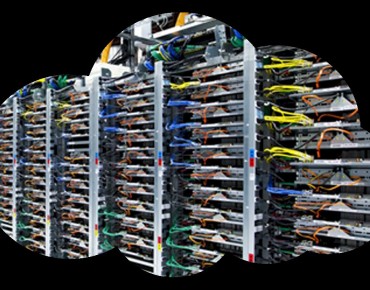Rackspace Profits Squeezed by Cloud Competition

Number two has to try harder, and it is not easy being the second-largest public cloud operator behind Amazon Web Services. This is why Rackspace Hosting continues to innovate with its hardware and software infrastructure and is ramping up its sales and marketing efforts. This is putting its profits under pressure, however.
In the third quarter ended in September, Rackspace boosted sales by 15.7 percent to $388.6 million, selling a mix of hosted and cloud computing and storage capacity. The company's dedicated cloud business (which includes traditional hosting as well as hosted private cloud systems) continues to grow, rising 9.2 percent to $280.2 million. But the public cloud is growing faster at Rackspace, growing 36.5 percent to $108.4 million.
Rackspace purchased $73.8 million in gear on behalf of its hosting customers in the quarter, up 44.6 percent and obviously growing a lot faster than revenues. The company also spent $12.4 million on datacenter build outs, more than double what it spent in the year-ago period. Rackspace had 101,967 servers in its datacenters at the end of the quarter, an increase of 14.5 percent compared to a year ago, when it had 89,051 systems. Those datacenters have 46.9 megawatts of total electrical capacity available, and 27 megawatts was used to power up all those machines and their associated switching and storage.
None of those machines are based on Open Compute designs yet, by the way. While Rackspace rolled out multiple machines inspired by those created by Facebook and donated to the Open Compute effort, Rackspace's own OCP machines are still being tested in the lab after being manufactured by Wywinn and Quanta. The new Performance Cloud Servers announced last week with fatter memory configurations and flash-based solid state drives (and no disk drives at all) come from an unnamed tier one server maker. (It is probably Dell, Hewlett-Packard, or Supermicro.)
Interestingly, the amount of revenue generated per server is on the decline, peaking at $1,310 per machine in December 2012 and sliding to $1,290 per machine in the just-ended quarter. The point of cloud computing is to share resources across workloads and customers in a virtualized environment and to drive up utilization and drive down costs for a unit of capacity. This drop in revenue per machine is a bit perplexing. There server base only grew , but it seems to be related to the big investment in gear for hosting customers during the quarter as well as the public cloud build out with the flashy machines. It would be interesting to see the revenue for hosted and cloud servers separately. The idea is that Rackspace is growing its server
The company also capitalized $24.6 million in software and other project costs, most of this relating to its contributions to the OpenStack cloud controller and other tools it uses internally to manage its cloud and hosting operations. This is about the same level for software capitalization as Rackspace has been doing since it helped found the OpenStack project three years ago.
With R&D costs up 52.7 percent to $23.8 million and other sales and marketing costs on the rise, profits took a hit despite the revenue increase. Net income for the third quarter fell 40 percent to $16.3 million.
Lanham Napier, CEO at Rackspace, was clear that Rackspace was not interested in a race-to-the -bottom competition with Amazon Web Services when it comes to cloud pricing.
"Rackspace does not intend to pursue markets where the cloud provider strategy is to lead with unit price," Napier said on a call with Wall Street going over the numbers. "Instead, our strategy is to serve customer workloads when performance is the single most important attribute in the decision making process."











